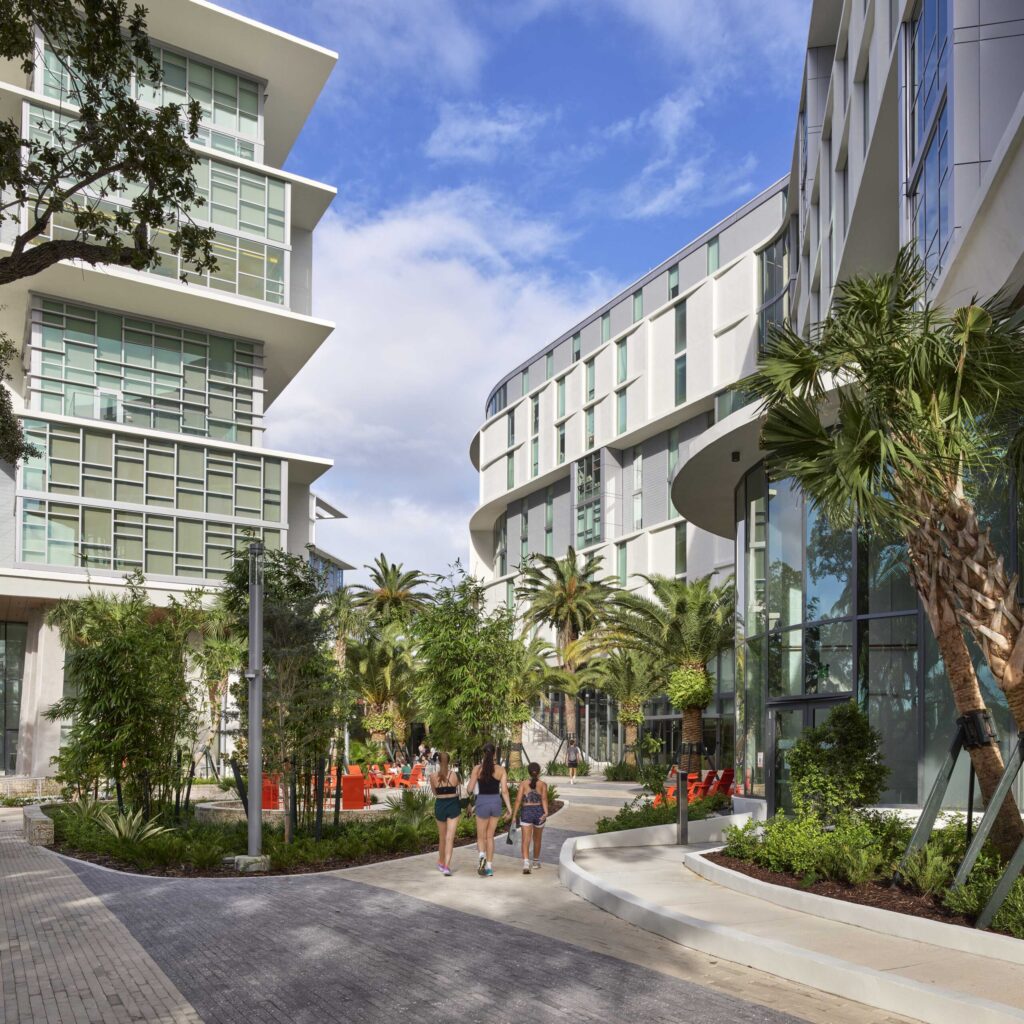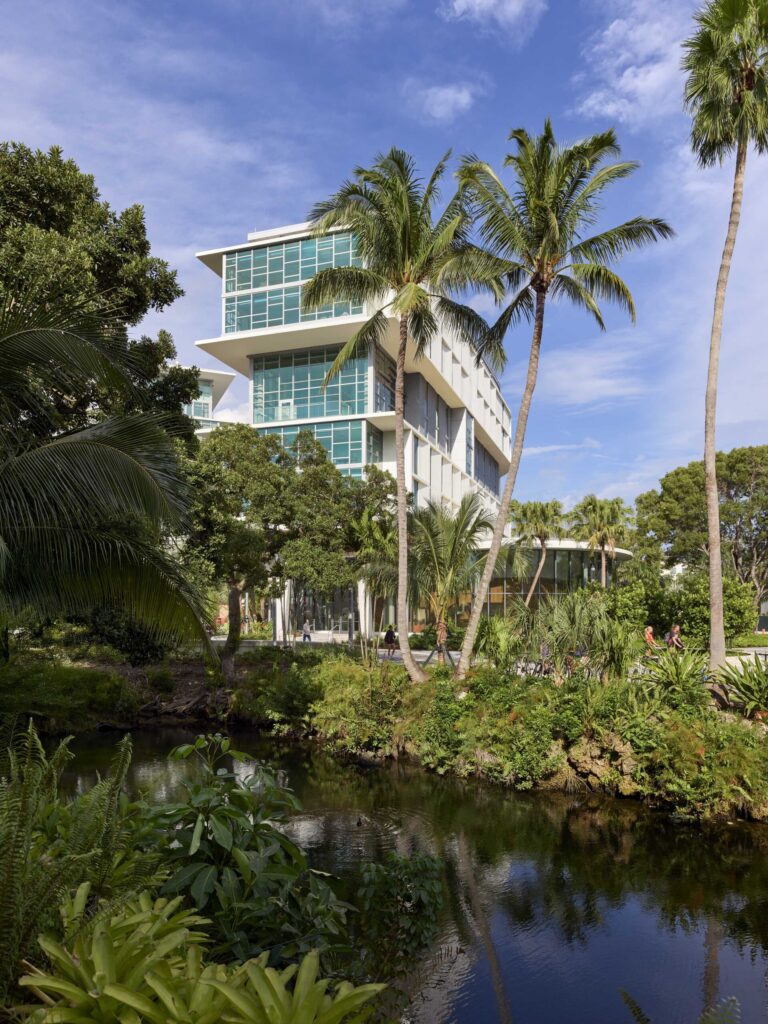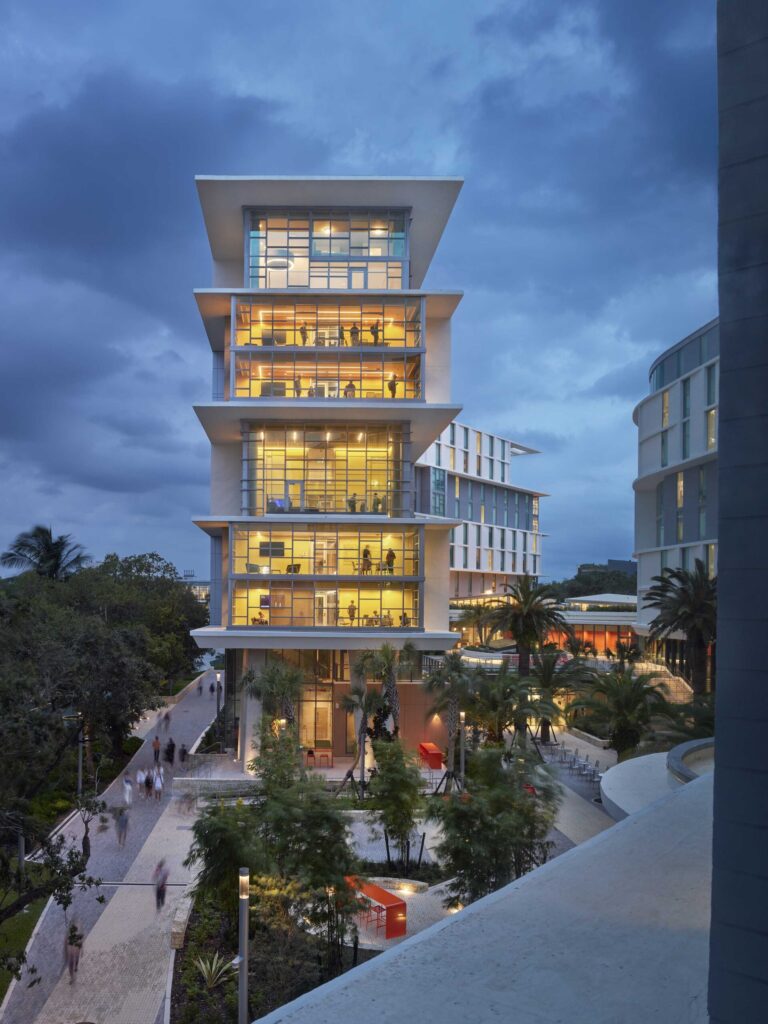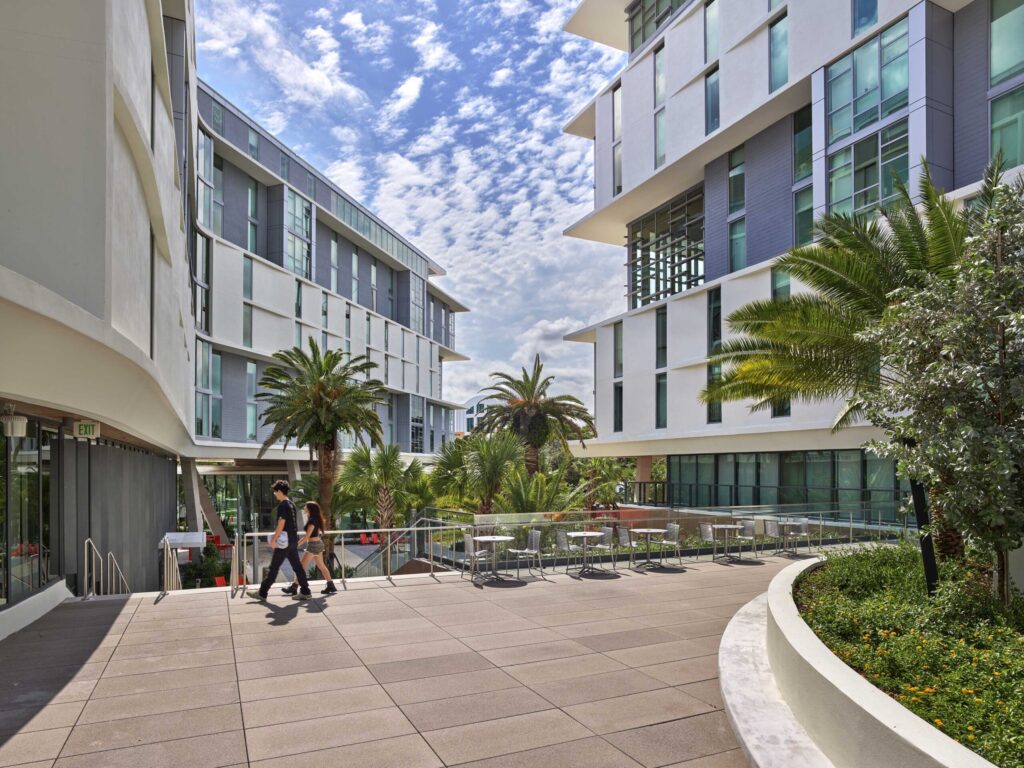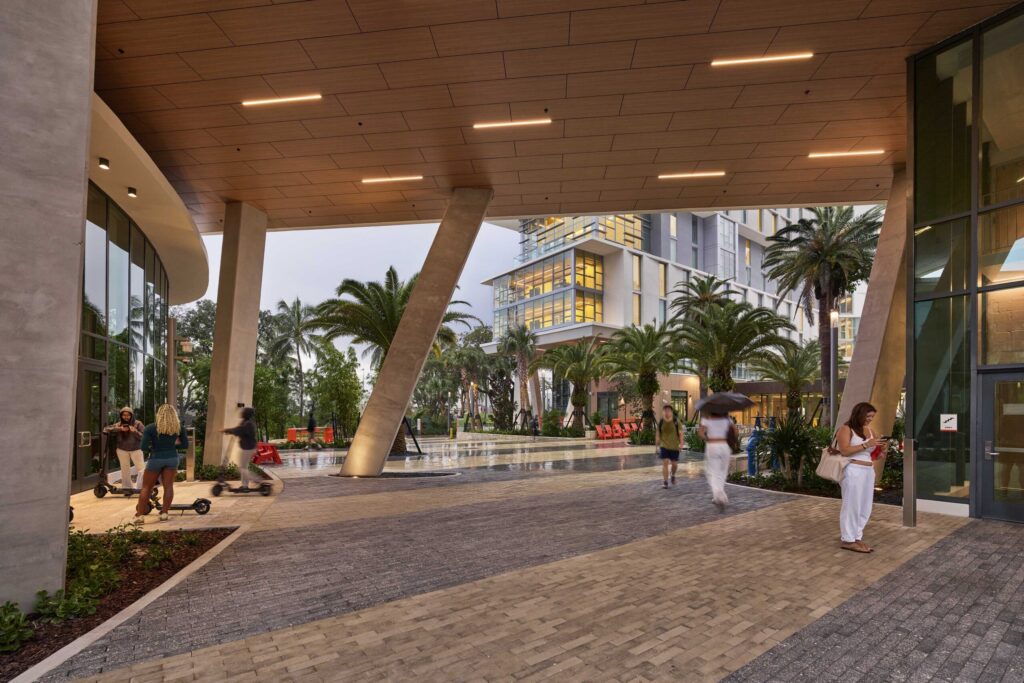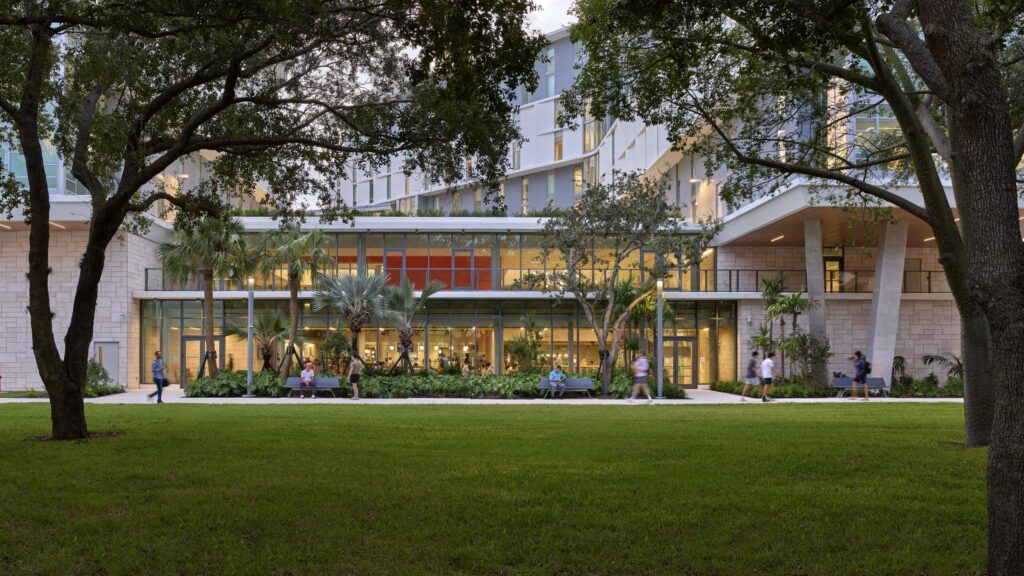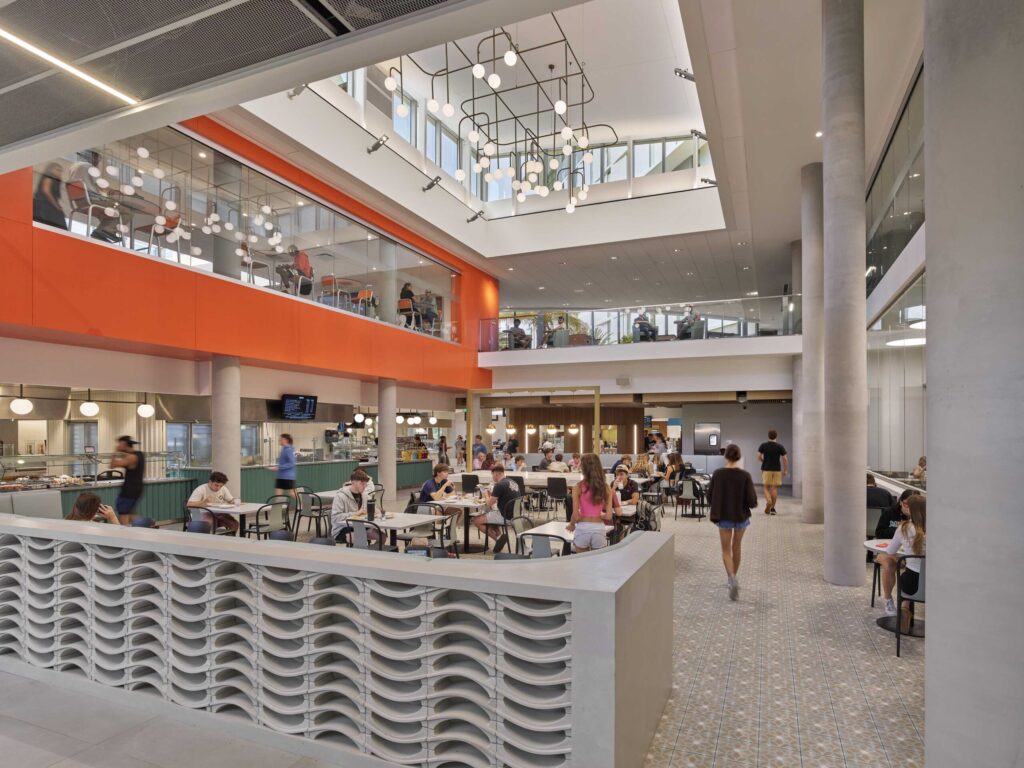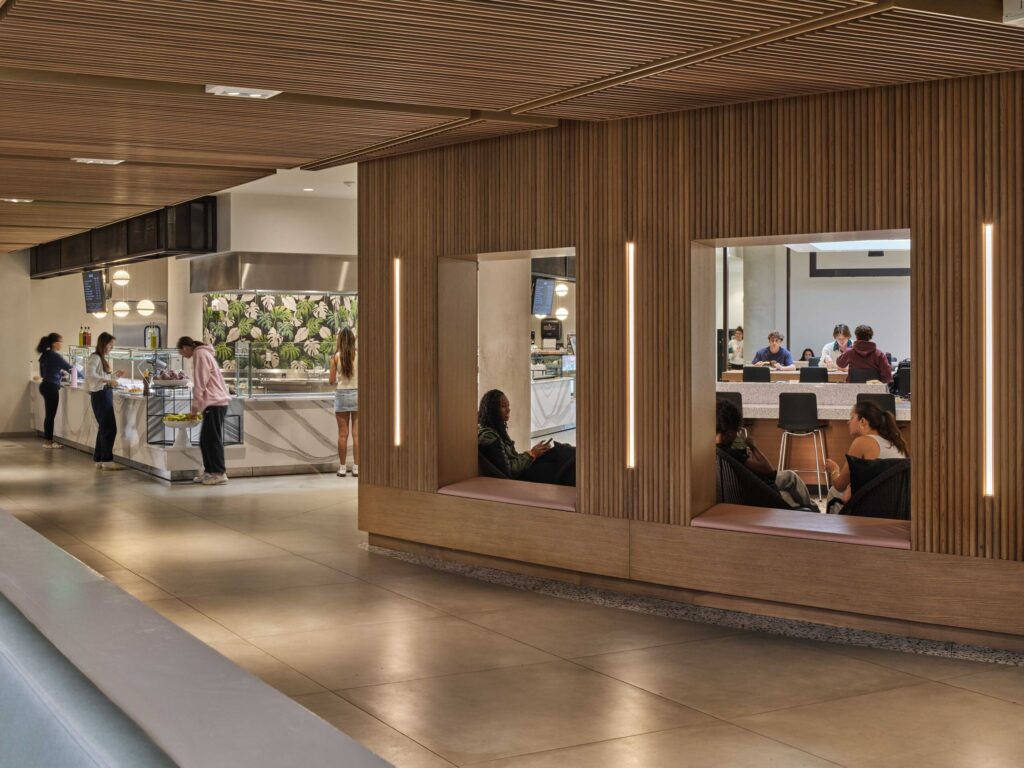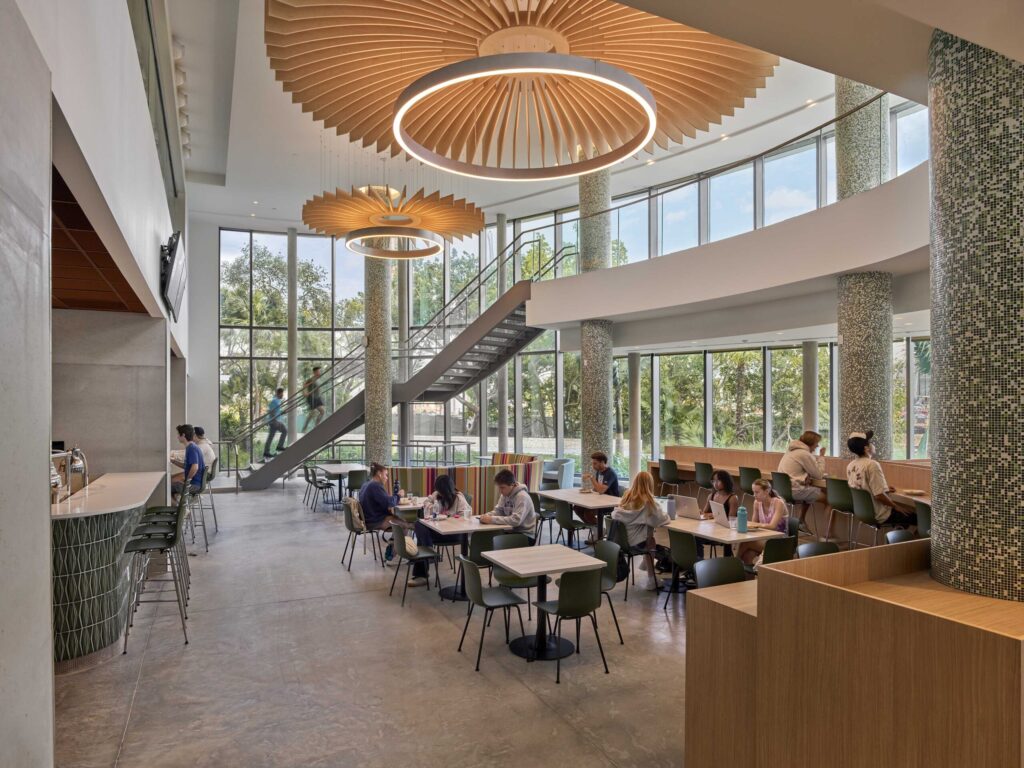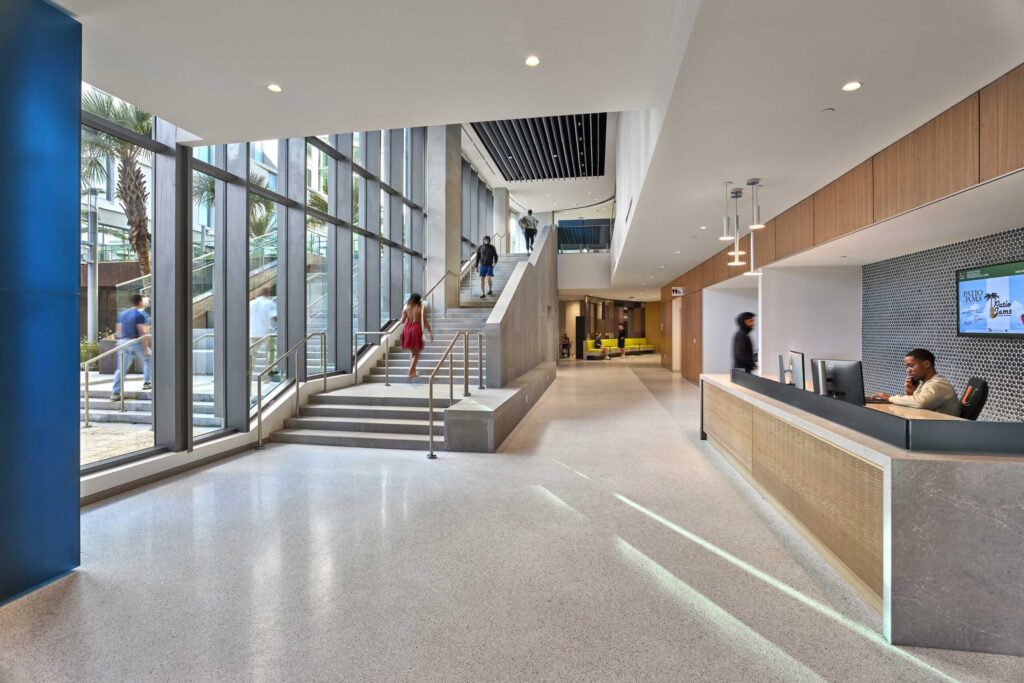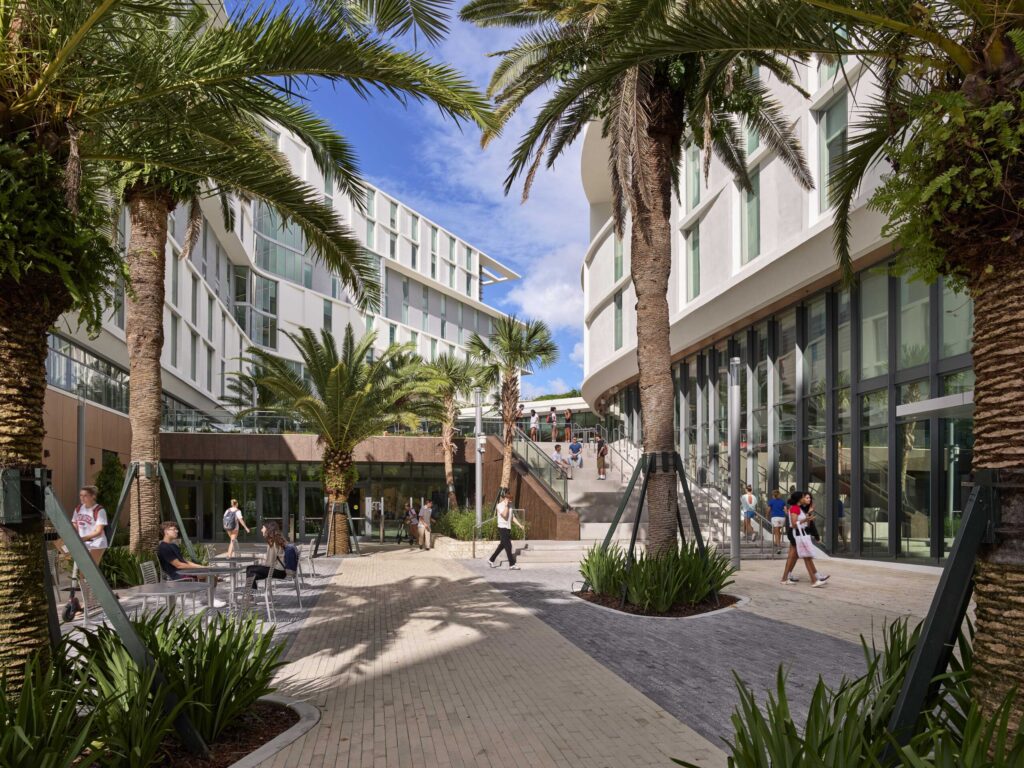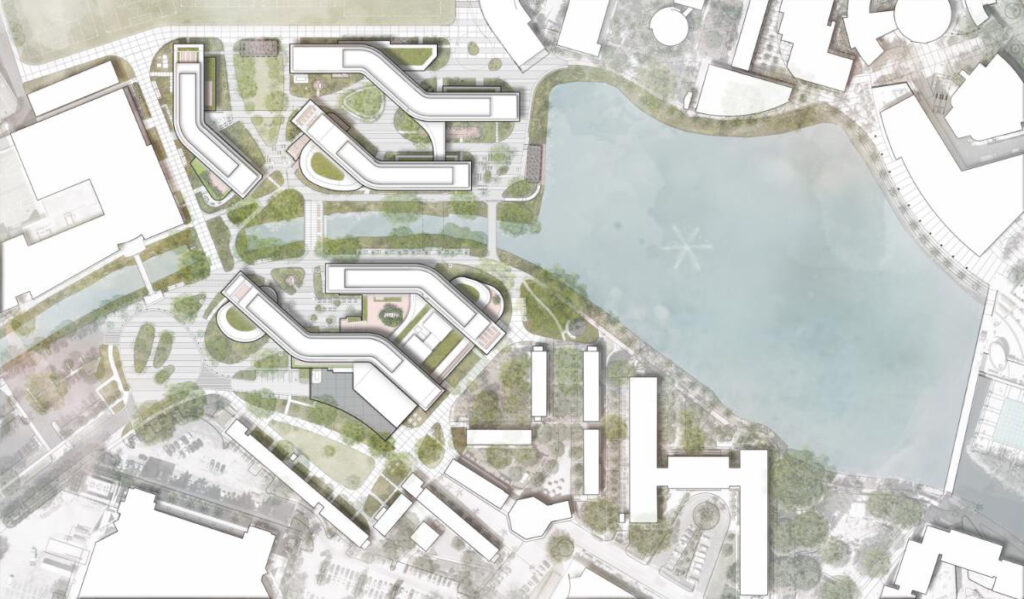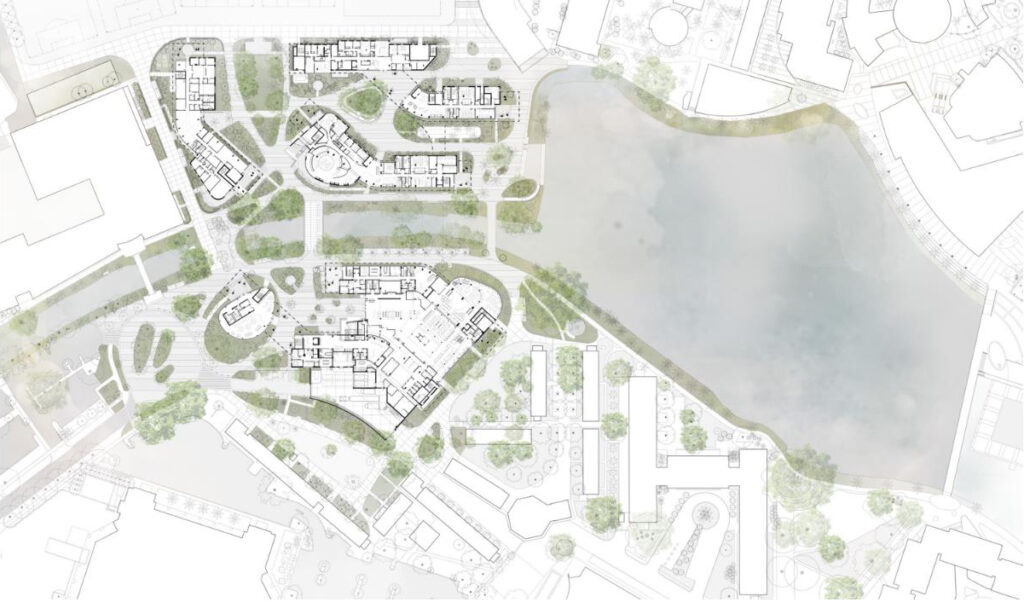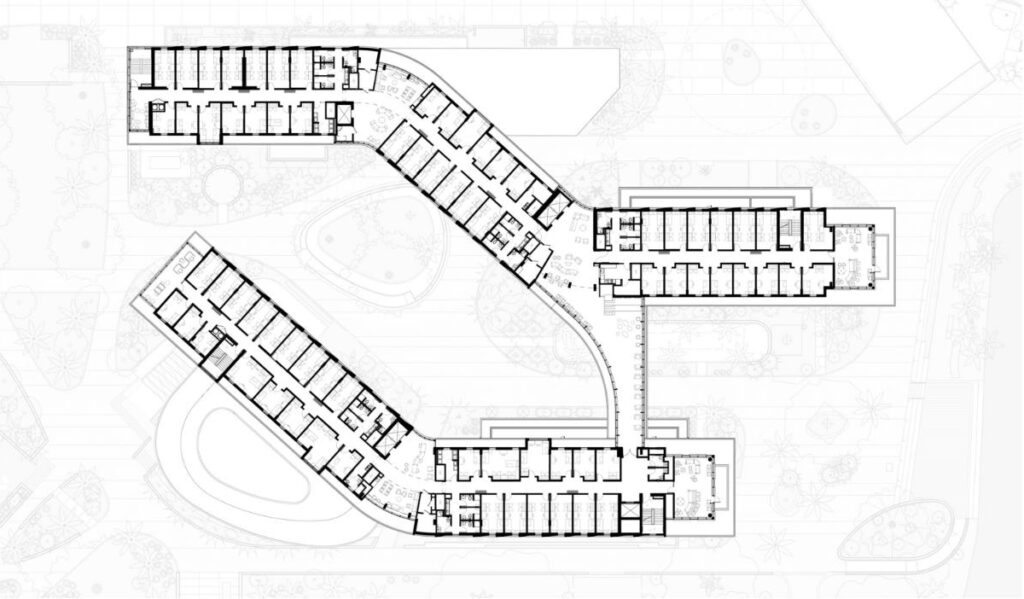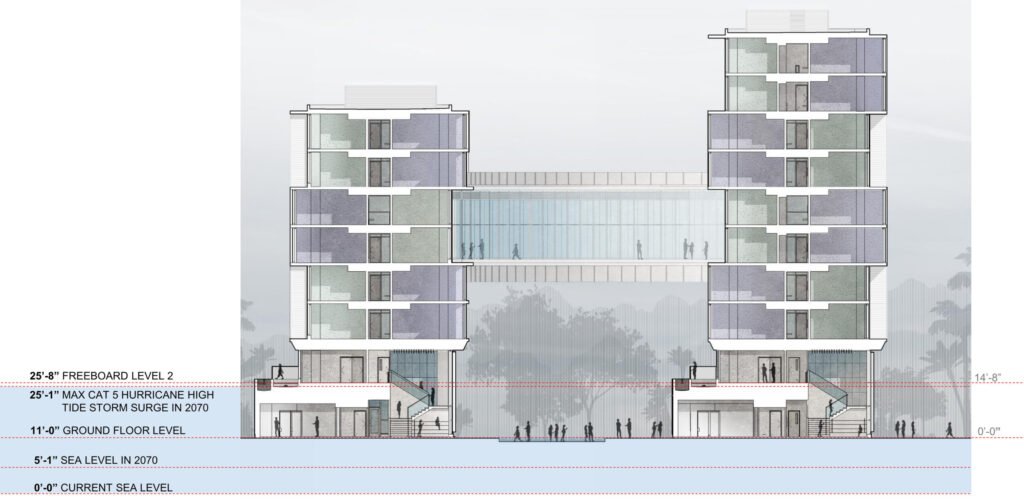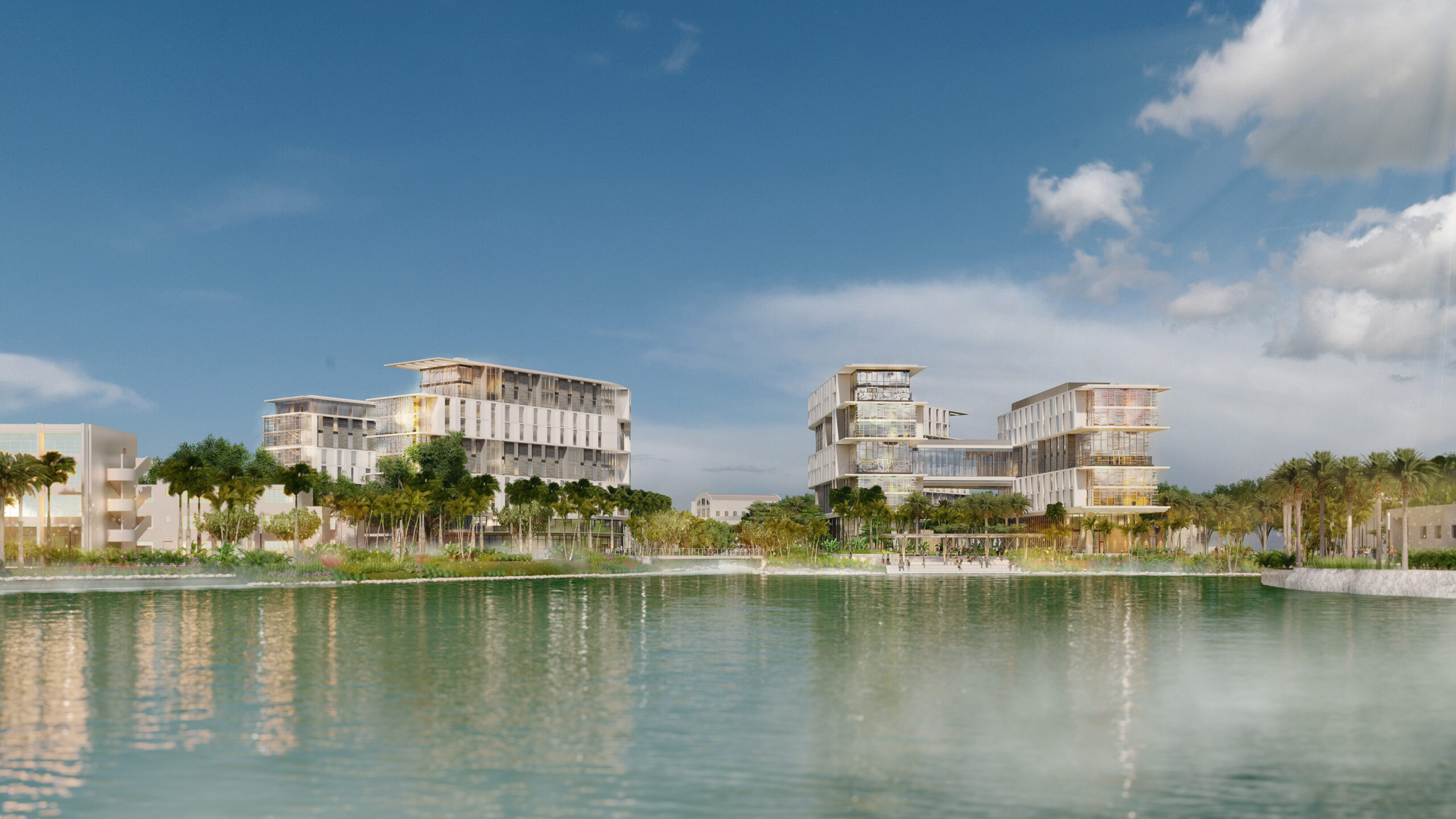
University of Miami Centennial Village
With a campus architecture that creates a magnetic destination and compelling home for first year students, VMDO won the competition for the University of Miami’s Centennial Village. The design of the lakefront residential village will transform the University of Miami’s first year student housing into a modern and eclectic mix of sustainable buildings.
Project Details
- Client: University of Miami
- Location: Coral Gables, FL
- Scope: New Construction
- Completion: Phase 1: 2024; Phase 2: 2026
- Size: 671,000 SF
- Performance: Pursuing LEED Gold | EUI 63 kBTU/sf/year (modeled) | 40% reduction (LEED ASHRAE 90.1-2010 Appendix G baseline)
Featuring 522,000 square feet of living-learning space on Lake Osceola, Centennial Village fulfills the vision for a visually stunning and programmatically complete first year residential community at the University of Miami. The decade-long, multi-phase development redefines what it means to live, learn, work, and socialize at the University of Miami.
The Residential Colleges are distinguishable as four buildings, offering a straightforward sense of orientation and identity for students that makes a lasting impression. The Canal Walk site connects residential, academic, dining, and pedestrian spaces along a shared waterfront.
The architectural expression of Centennial Village draws inspiration from the rich modernism of campus, the local and international style and culture of Miami, and the institutional aspiration of hemispheric leadership. The building form curves in response to Lake Osceola, creating an undulating effect by pairing the slender ends of buildings with the gentle bends of the facades. Resident floors extend out over transparent ground-level gathering spaces, revealing the activity of shared spaces and enticing others to join.
The design of Centennial Village offers respite through physical and visual connections to nature and through the incorporation of natural materials and colors. The creation of an active pedestrian landscape that brings the outdoors in through views and daylighting increases student alertness levels, decreases absenteeism, and supports better sleep quality and opportunities for movement. Access to daylight, acoustic design, and attention to temperature and humidity create the right conditions that make residents feel comfortable and at home.
VMDO was selected as the lead design architecture firm based upon a competition that involved a number of nationally known firms. Their design was selected on the merits of the architecture, its appropriateness to the site, and for me, as a student housing professional, their insight into how to create an effective living learning community for our students.
Collaborators
Partner Architect: Zyscovich, now operating as Stratus
MEP Engineering: TLC Engineering Solutions
Structural Engineering: Bliss & Nitray
Civil Engineering: Langan
Landscape Architecture: O’Shea-Wilson Siteworks
Contractor: Coastal Construction
Project Photography: Alan Karchmer
Additional Drawings

Concept Diagrams

Matrix
Sustainability

Sustainability Strategies
Given Coral Gables’ location in the crosshairs of climate change, it is especially important for Centennial Village to be both adaptive and resilient by lessening overall demand for energy, increasing the proportion of energy that may be derived from renewables, and fostering social cohesion. Recent projections call for increased inland flooding due to storms, increased temperatures and reduced air quality, and water scarcity due to saltwater intrusion. All building infrastructure is located “freeboard” on elevated floors and above any projected flooding due to a Category 5 Hurricane during high tide .
The design of Centennial Village offers respite through physical and visual connections to nature and through the incorporation of natural materials and colors. The creation of an active pedestrian landscape that brings the outdoors in through views and daylighting increases student alertness levels, decreases absenteeism, and supports better sleep quality and opportunities for movement. Light amount and quality, acoustic design, and attention to temperature and humidity create the right conditions that make residents feel comfortable and at home.
